Most preppers are by now familiar with the concept of a bug-out bag. You know what I’m talking about: a huge backpack or other piece of luggage that has absolutely everything you need to survive and sustain if you are forced to flee from your home or other safe location.
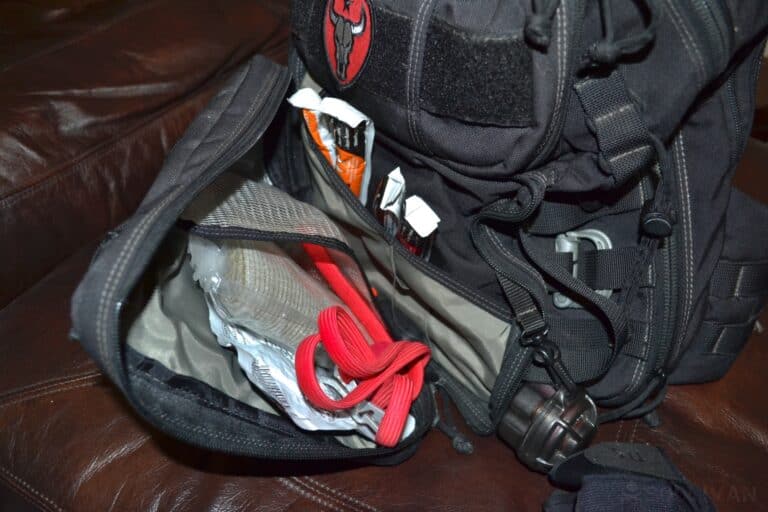
inside of a get home bag
But what happens if you’re away from your home or your bug-out bag and other supplies are? You might need to get home before you can properly assess and react.
This is where a get-home bag comes in. A smaller, lighter kit that carries the bare minimum essential supplies to help you get home on foot.
Bags like these are ideal for keeping in your vehicle, just in case, and in this article I’ll tell you how to put one together properly.
What is a Get-Home Bag?
A get-home bag is nothing more than a piece of luggage, typically a backpack, that contains purpose-chosen supplies intended to help you return home, or to any other base location, after being stranded away from home.
What is a Get-Home Bag Used For?
Getting home! All jokes aside, your get-home bag is going to give you what you need to keep moving and overcome problems when trouble strikes and you are away from your home or base camp.
The precise definition, size and packing list will vary somewhat depending on who you ask, but one of the defining characteristics of the get-home bag compared to the bug-out bag is that the get-home bag is designed for shorter duration events.
Specifically, if you’re going to have to hoof home from the other side of the city or from a couple of dozen miles away over a couple of days.
They are not designed to keep you going for weeks on end. But if you need to bail out and beat feet for home, a get-home bag is what you want.
[TAG1]
Car Get-Home Bag Contents
The following items represent a core selection of gear and supplies that you should expect to find in any get-home bag.
Now, your bag might carry a little more or a little less depending on your requirements and your lifestyle.
We’ll talk about that in a minute, but for now consider this a sort of standard loadout.
1. First-Aid Kit
One of the number one items every prepper should carry. Consider that you might start off an event already injured and needing an intervention before you can get moving.
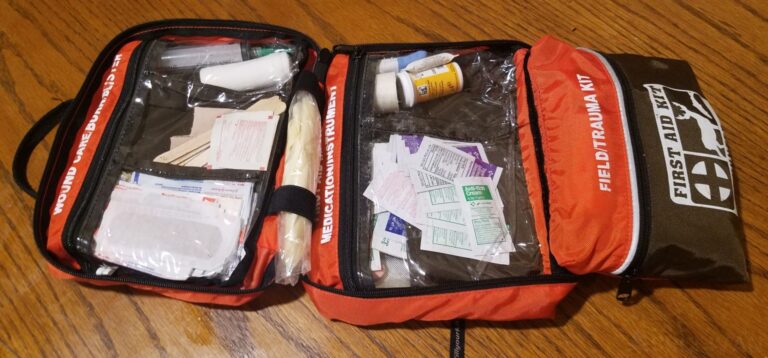
a compact first-aid kit
Carry supplies that can deal with significant trauma, and learn how to use them; things like hemostatic gauze, tourniquets, and so forth.
Keep in mind that many of these items do go bad over time, so keep an eye on them and rotate them as needed in your kit.
2. Boo-Boo Kit
A boo-boo kit is really just a first-aid kit as it is thought of by the rest of the world.
It contains things for treating minor injuries, like band-aids, bite cream, moleskin, antiseptic swabs, sunburn relief, and things like that.
Anything that is going to sap your will, or physically slow you down as you travel can be treated by this kit.
3. Paracord
You know it, you love it. Paracord or equivalent cordage has a thousand and one uses if you have a good working knowledge of knots, and there is no end to the solutions it can provide for problems on your journey, from improvising tools to setting up temporary shelters.
If you don’t need the strength of paracord, consider using 80lb accessory cord.
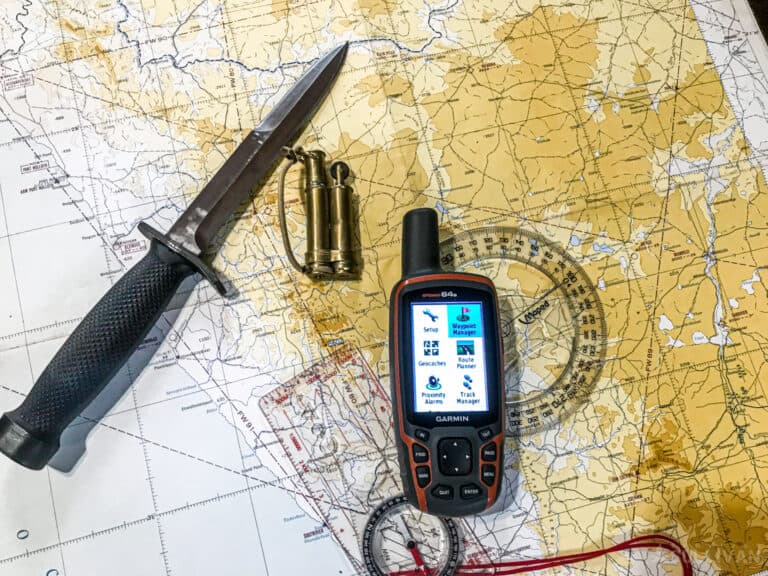
GPS, knife, map compass, and ruler over a topo map
4. Compass
Even if you think you know where you are going, bring a compass. If you’re forced to detour or are dealing with poor visibility, this can be a lifesaver.
5. Maps
Your get-home bag should include a couple of maps, depending on where you travel and work. A detailed city map of your surrounding area where you live, and a good road atlas.
Keep in mind that you might be facing a disaster that radically alters the landscape, meaning you can’t navigate by visual landmarks as usual.
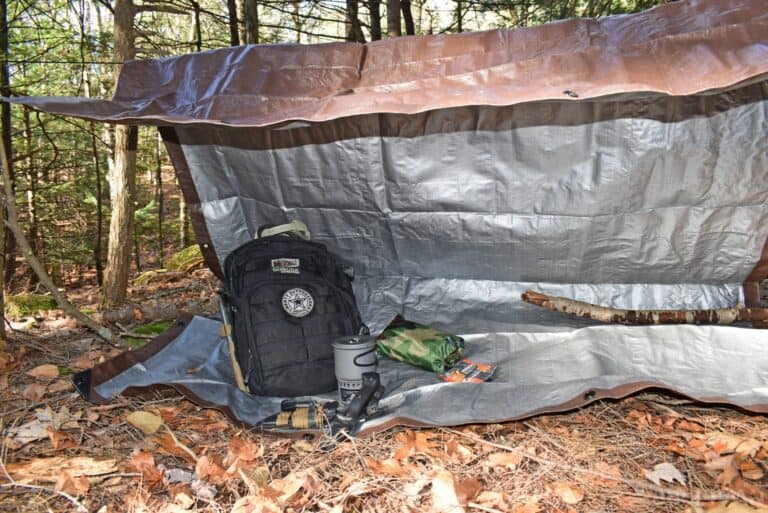
a lean-to tarp shelter
6. Tarp
Tarps are too useful to not include. You can use them as a ground cover, as a shade, as a parka, or fashion them into a temporary tent or bivouac.
Combined with a working knowledge of knots and good cordage, as mentioned above, you can do anything.
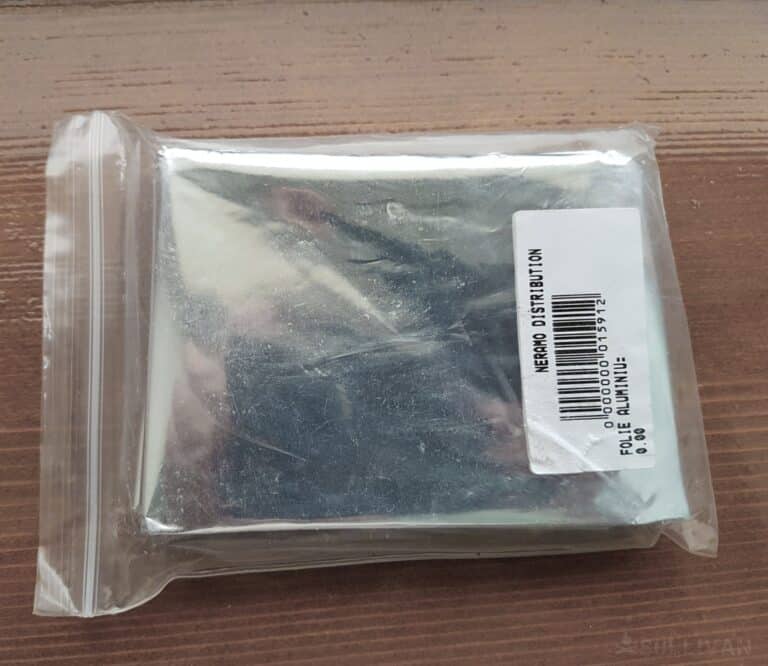
a Mylar space emergency blanket in Zipper bag
7. Space Blanket
Even if you live in a warm area it’s possible you could get cold. Really cold, especially if you get wet at night.
Space blankets are ultra-efficient and reflect more than 90% of your body’s heat back onto itself, keeping you remarkably warm in many conditions.
An essential survival item that packs down so small and light it takes up basically no room.
8. Water Bottle/Bladder
You’ve got to have water, especially if you’re forced to abandon your vehicle, and continue to move fast on foot.
Keep a sizable, sturdy water bottle with your pack, not a disposable bottle that’s prone to leakage.
Alternately, a water bladder like a Camelback is also useful, but they are harder to take care of over time.
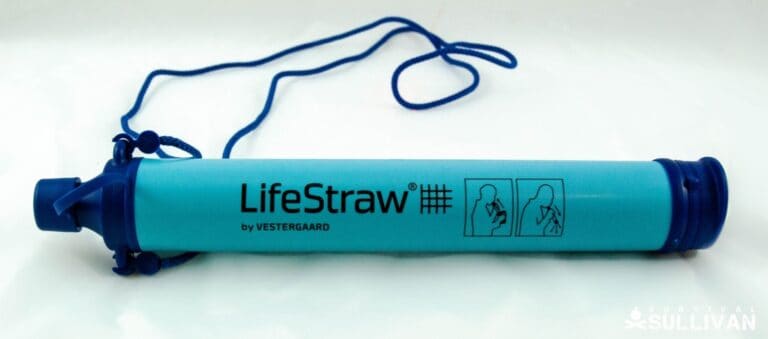
the Lifestraw personal water filter
9. Compact Water Filter
You’re not going to be carrying a ton of water, and you should have some ideas in mind on where you can refill.
This water isn’t going to be clean, so make sure you process it with a separate or inline water filter to make it safer to drink on your journey.
10. Rations
Chances are you’ll be burning a lot of calories on this little foray, and if you run out of energy that is going to seriously impede your mental and physical performance.
You don’t need to carry a ton of food, but what you should carry are energy-dense snacks that are easy to eat on the go.
Beef jerky, trail mix, energy bars and things like that. No prep required!
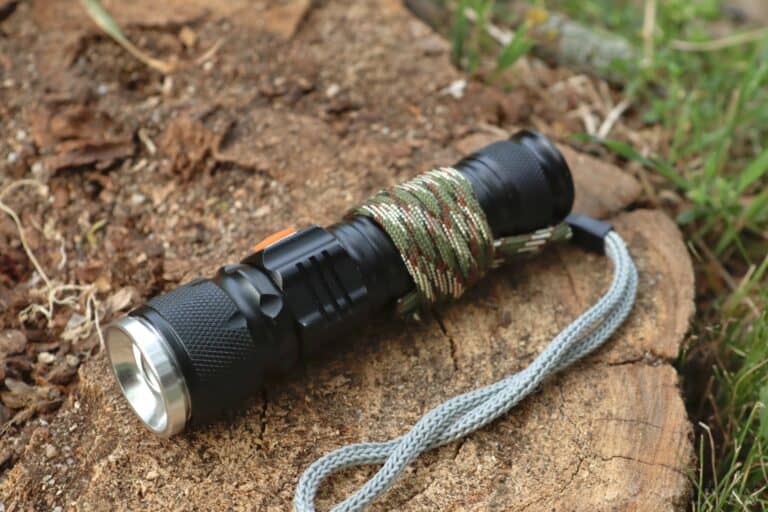
flashlight with paracord wrapped around it
11. Flashlight
Darkness will conceal many dangers whether you are indoors or out.
Carry a good utility flashlight, and preferably one that is durable, energy-efficient and has multiple brightness settings to help you make the most of your available power.
12. Headlamp
A head-mounted alternate and supplement to the flashlight that will help you keep your hands free.
13. Batteries
Your flashlight and headlamp both will use batteries for power. If they are rechargeable, carry a power bank and charging cables instead.
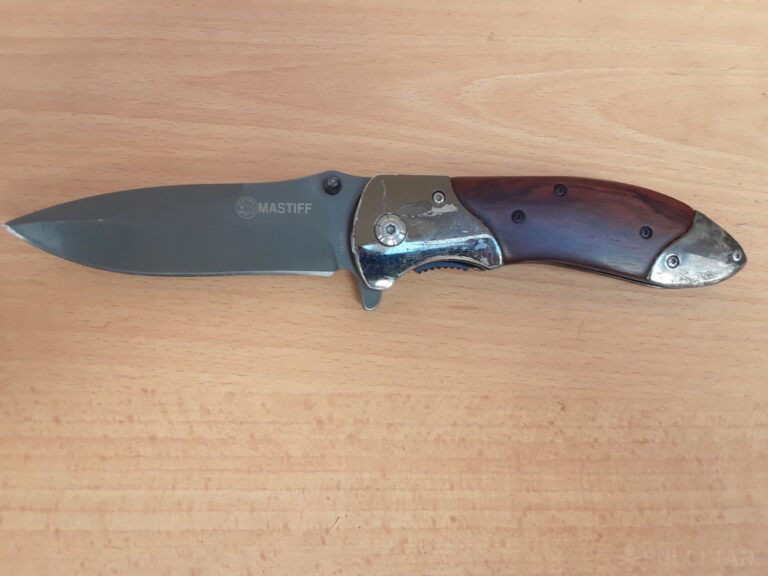
Mastiff folding knife
14. Knife
A good knife is priceless in any kind of survival scenario. If you don’t habitually carry one, keep one in your get-home bag.
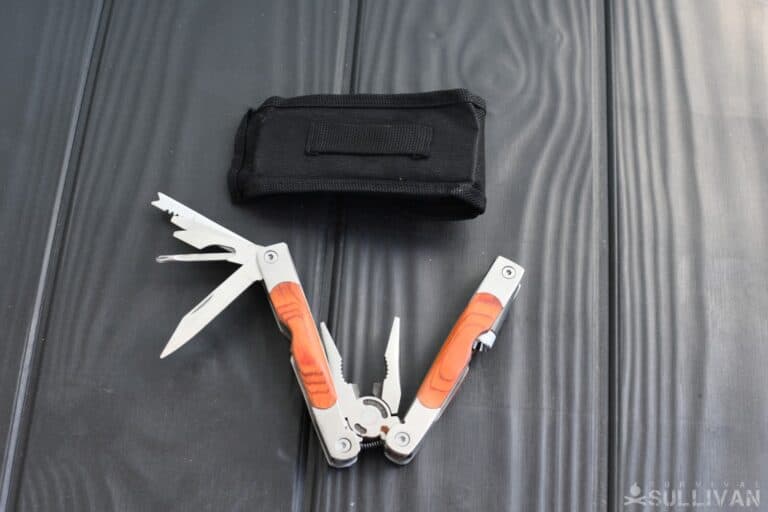
multitool and pouch
15. Multitool
A compact pliers-style multi-tool we’ll take care of 90% of the things you’ll need on your trek home.
16. Gloves
Protect your hands. Wear gloves. Whatever style you prefer, include them.
17. Footwear
This is optional, assuming you wear footwear suitable for long hikes habitually.
Also, keep in mind you don’t have to put this in the pack itself, but keep them near your pack to change into before you head out.
18. Notepad and Pen or Pencil
You never know when you’ll need to record essential information or leave notes. Choose a waterproof notepad and a good pen or pencil.
19. Underwear and Socks
If your underwear and socks get soaked with water or sweat, you’ll quickly become miserable and more likely to suffer from blisters or rashes that can slow you down.
A dry pair of each can be a lifesaver.
20. Cash
In times of trouble, cash can get you favors that make all the difference.
Don’t omit this and don’t believe the bogey that, in the midst of a major disaster, cash will somehow become meaningless. It won’t unless society actually comes to an end.
Always Adapt Your Get Home Bag Based on Your Needs
Keep in mind that the list above is merely an example, although I believe all of the items shown form an excellent and truly functional core for any get-home bag.
Don’t be afraid to add or delete items depending on your lifestyle, how long your commute is and other factors.
If you start traveling far out of town for work, you might need to add more. If you always stay pretty close to home, you can get away with a lot less.
How to Pack Your Get Home Bag for the Car
Packing your get-home bag is pretty straightforward, and if you’re unfamiliar with the principles of packing a backpack for maximum efficiency and energy conservation, you should look into it.
Generally speaking, you’ll want to keep the heaviest items the lowest in the pack and the closest to your body to help keep you balanced.
Lighter items fill up the rest of the space, and anything that you’ll need frequently should be placed in easily accessible pouches or immediately under the opening of the pack.
When keeping the pack in your car, do your best to keep it out of sight because backpacks can be targets.
Stashing it in an old, but clean, painter’s bucket is effective camouflage, or just keep it in the trunk.
Any large or bulky items you need in your kid don’t have to be packed in the bag itself. As mentioned, shoes or boots can be kept nearby to be changed into before you take off.
Lastly, don’t forget that the environment inside your car is very harsh. It will be extremely hot when it’s hot outside and extremely cold when it’s cold.
Water can freeze, and foods will spoil much more quickly than usual. Batteries might drain or other devices could fail.
Inspect the items in your get-home bag regularly and replace them as needed.
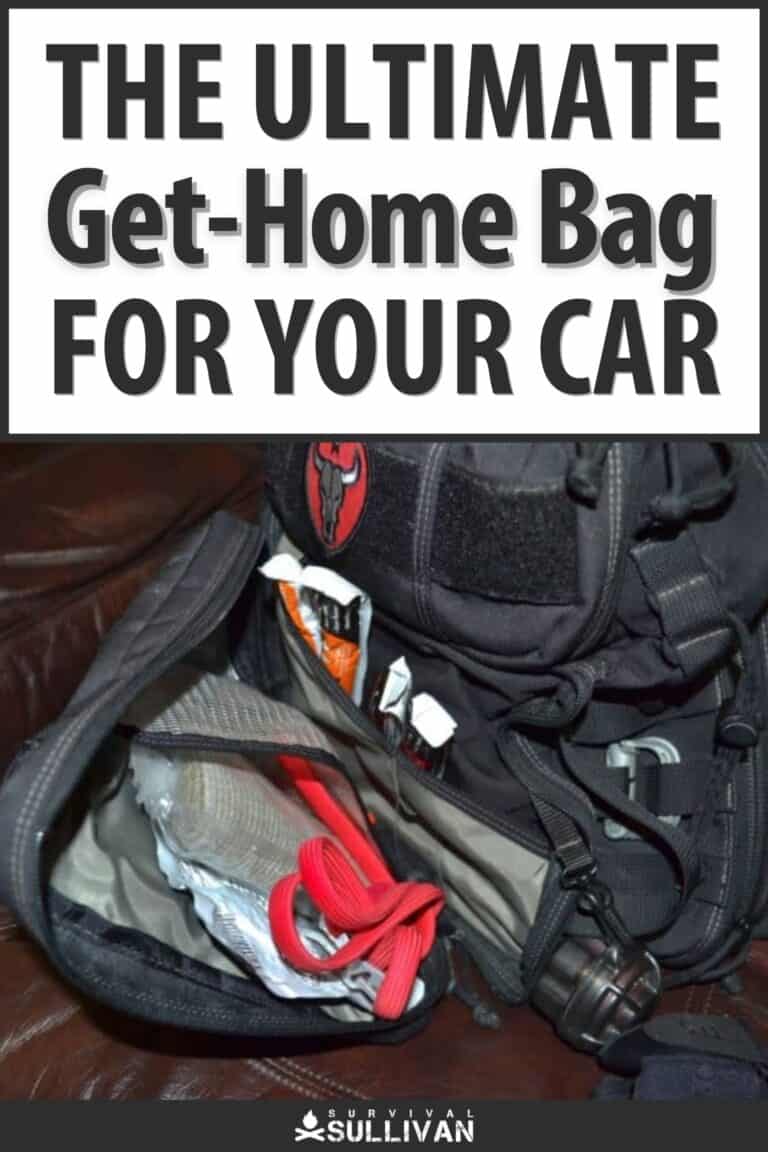
The post The Ultimate Get-Home Bag For Your Car appeared first on Survival Sullivan.
By: Tom Marlowe
Title: The Ultimate Get-Home Bag For Your Car
Sourced From: www.survivalsullivan.com/car-get-home-bag/
Published Date: Tue, 11 Jul 2023 16:00:00 +0000
------------------------
Did you miss our previous article...
https://bushcrafttips.com/bushcraft-news/hrt-lbac-plate-carrier-the-evolution-of-body-armor
 What is BushcraftSurvival SkillsToolsVideosBushcraft CampsBushcraft KitsBushcraft ProjectsPrivacy PolicyTerms And Conditions
What is BushcraftSurvival SkillsToolsVideosBushcraft CampsBushcraft KitsBushcraft ProjectsPrivacy PolicyTerms And Conditions
